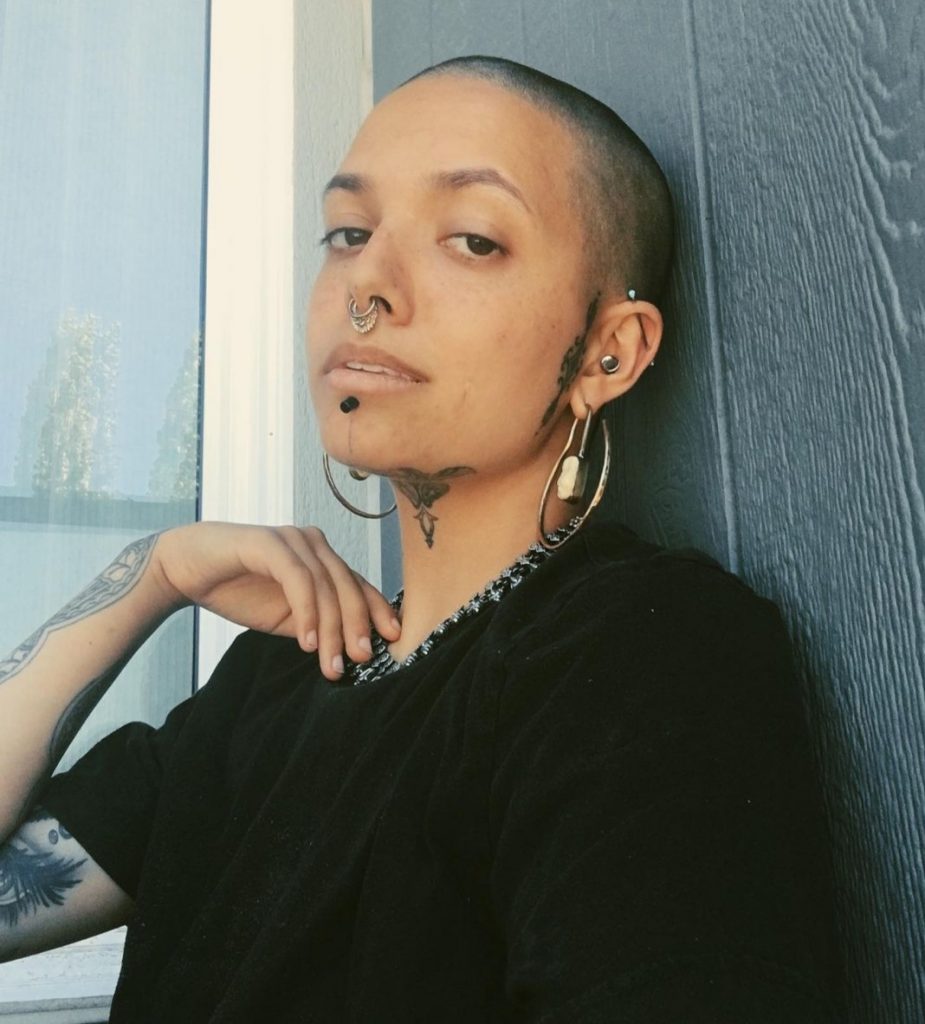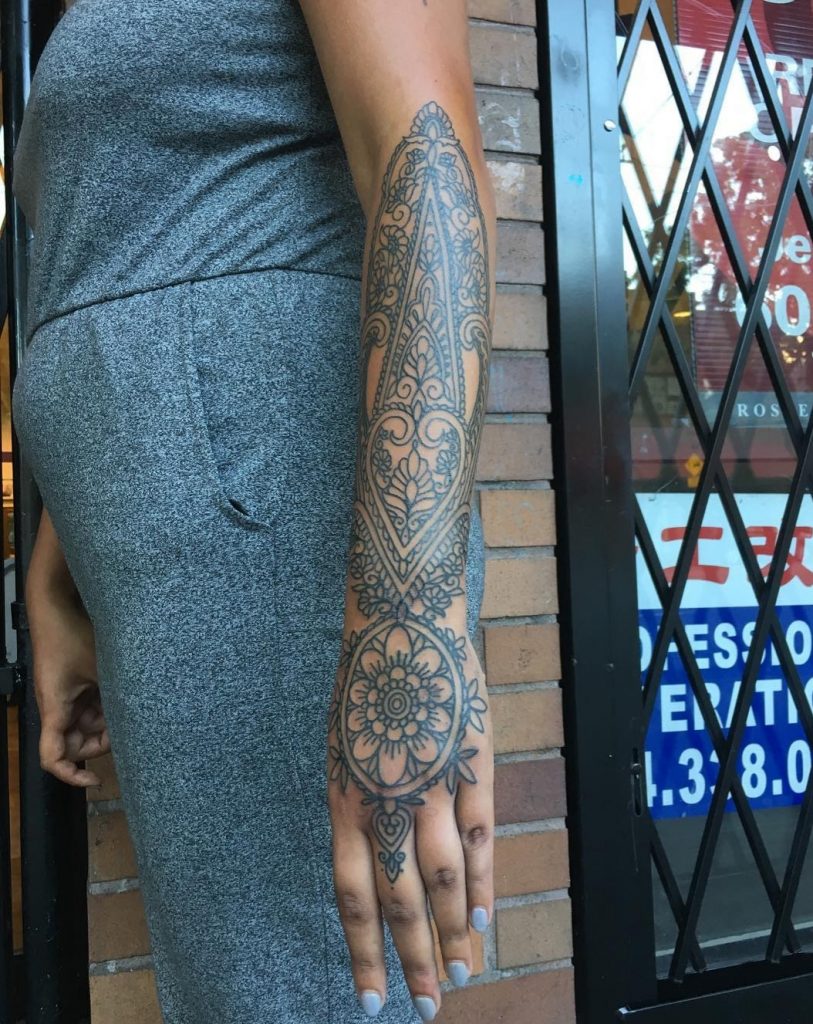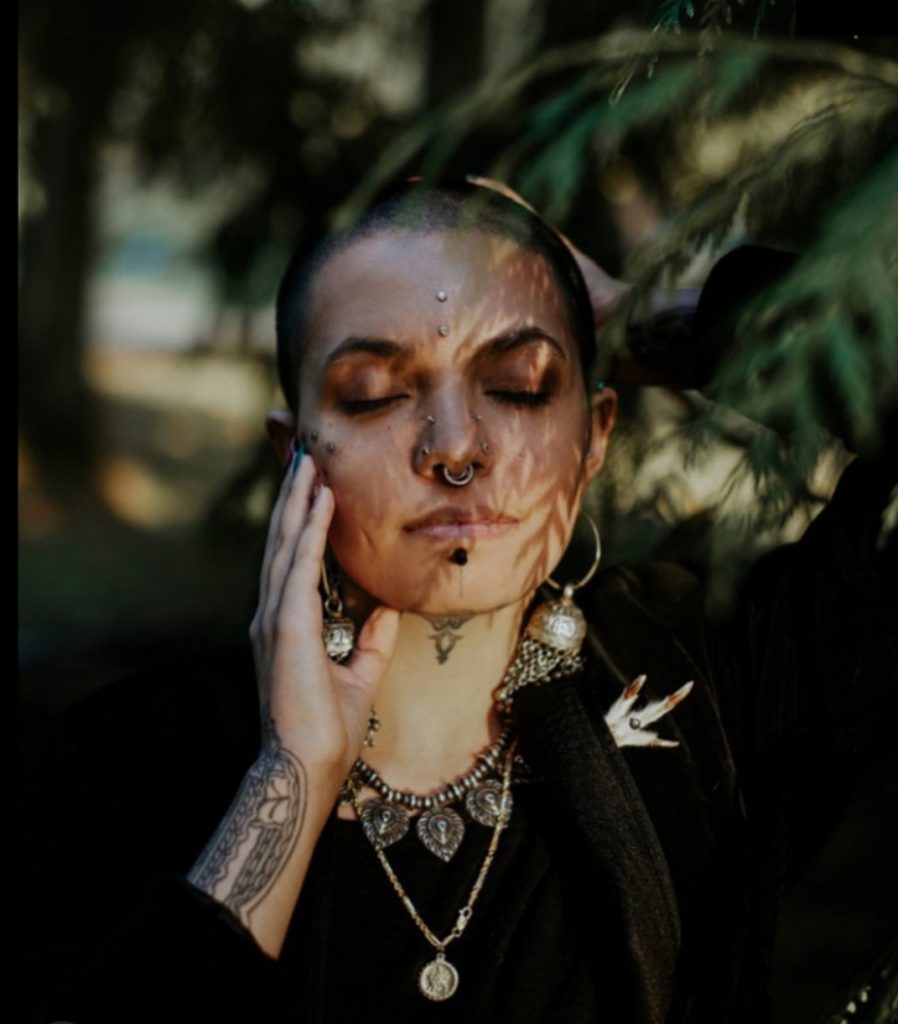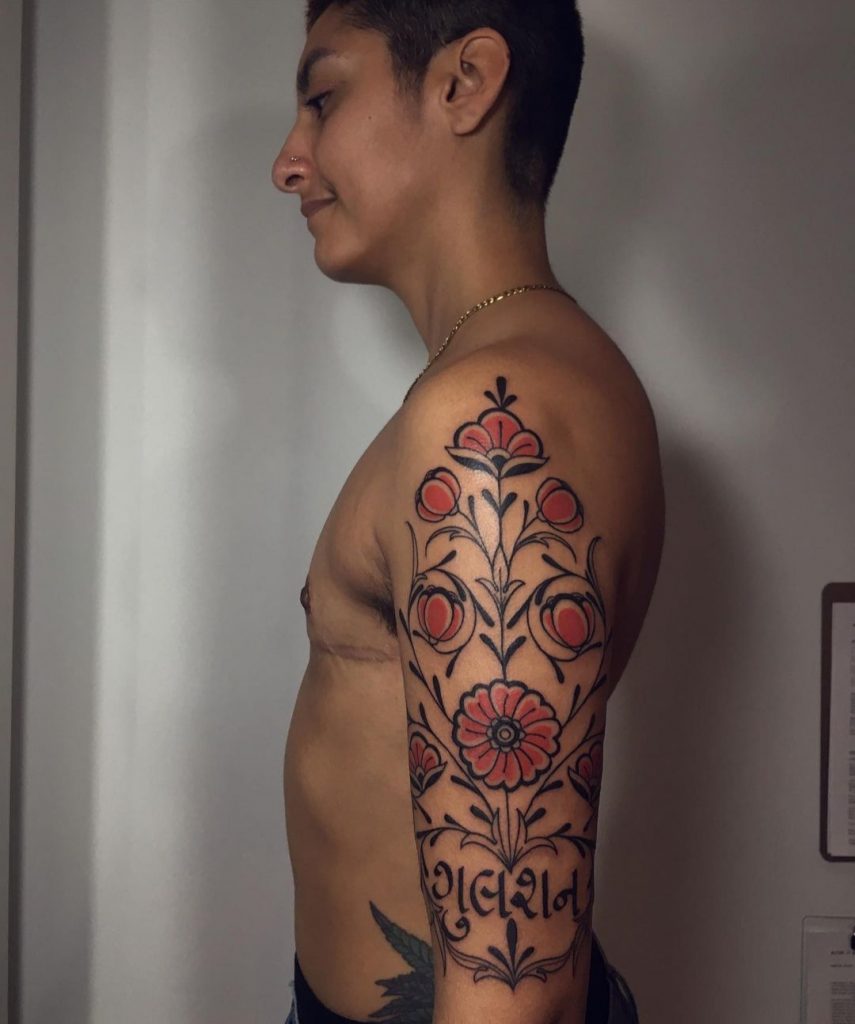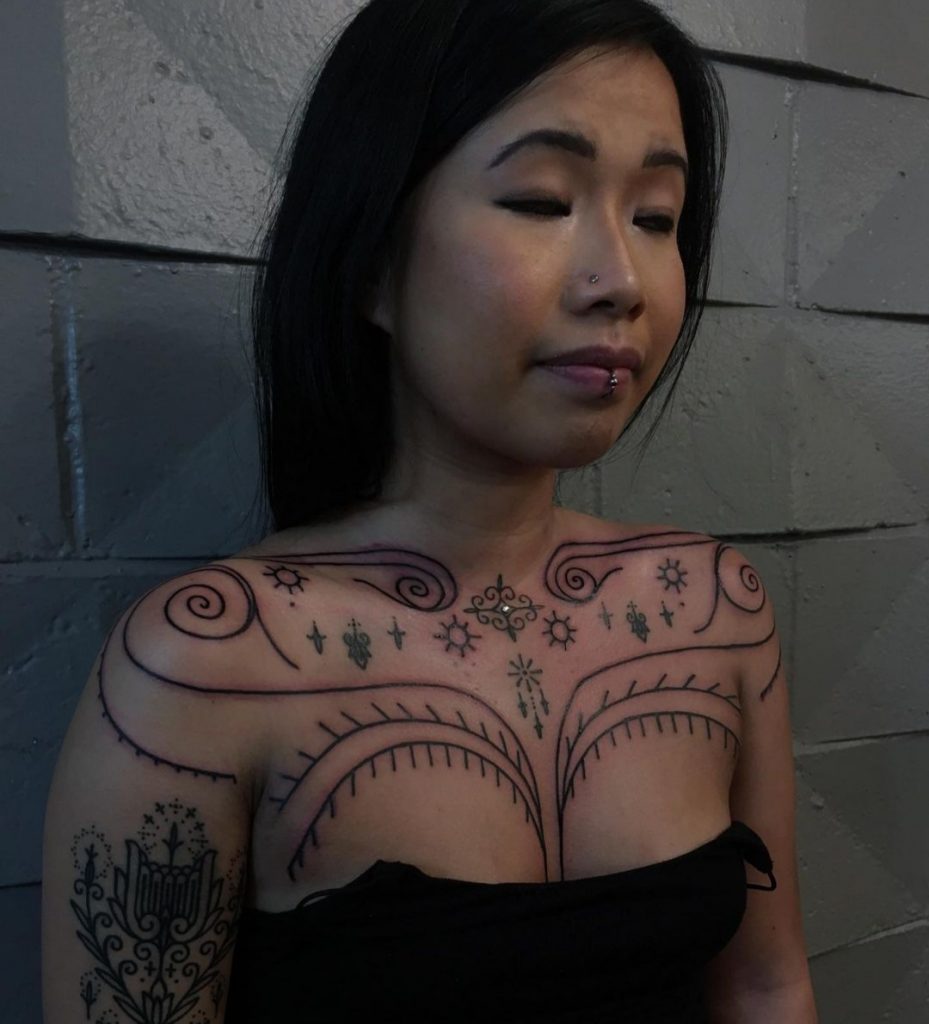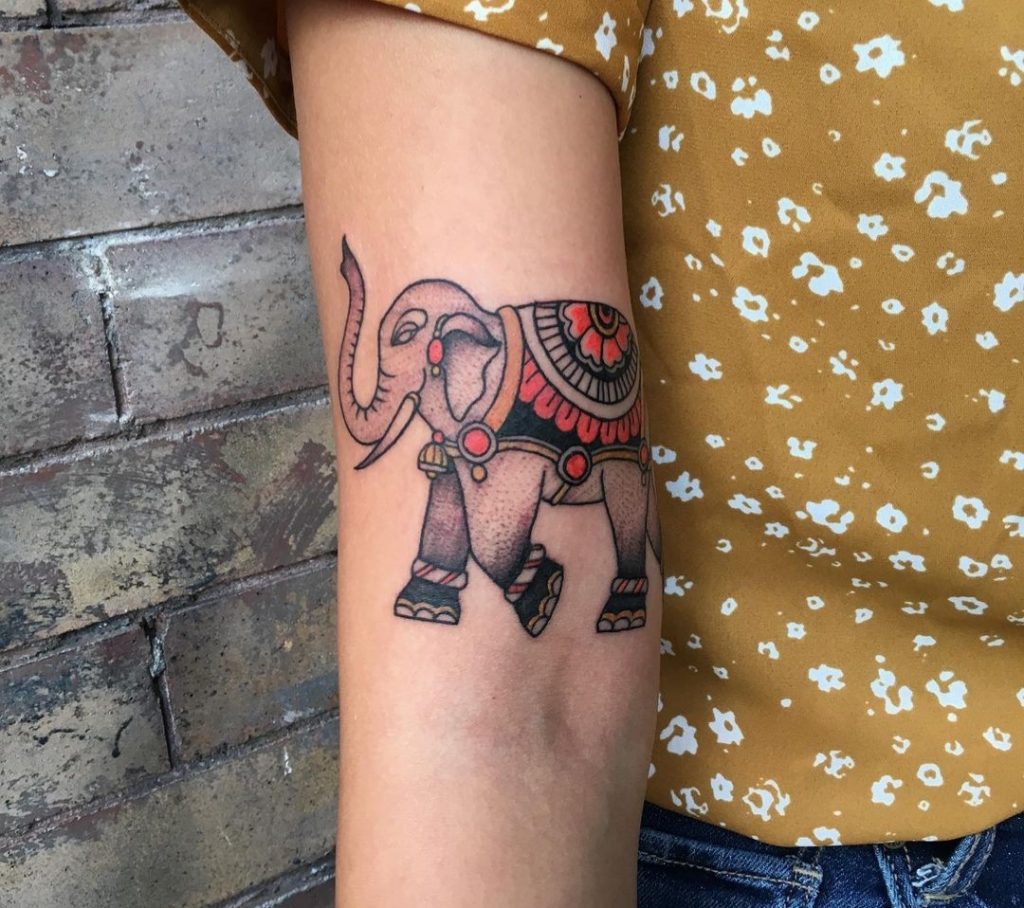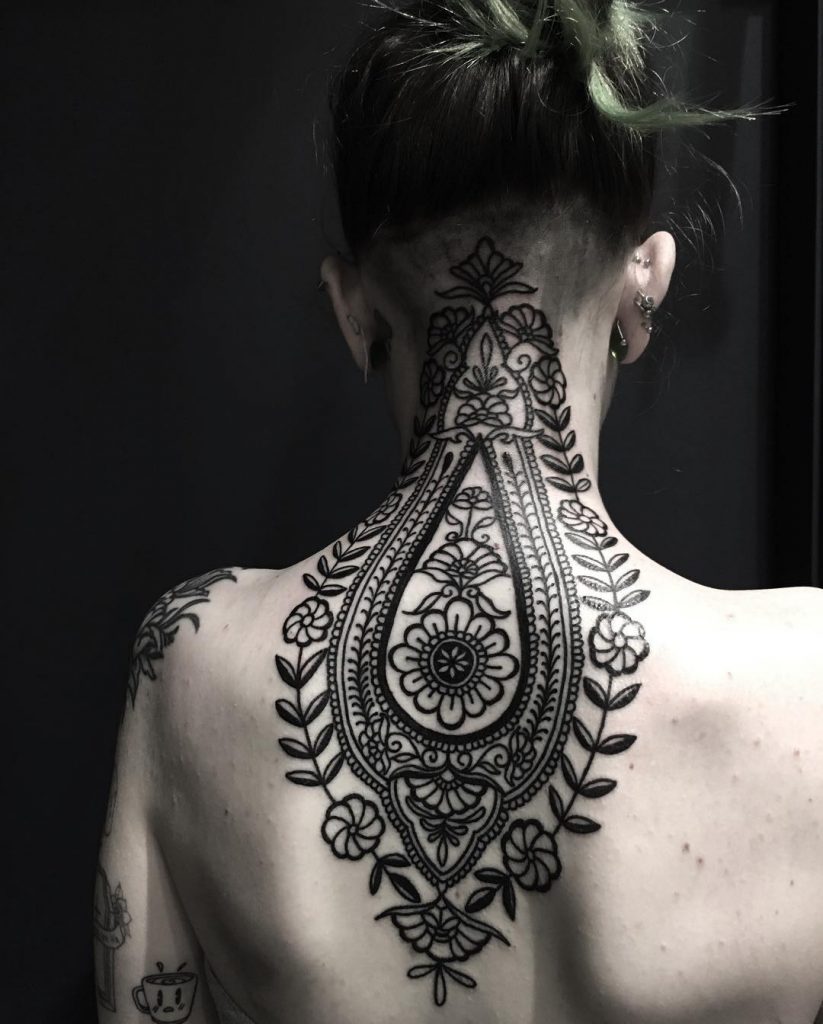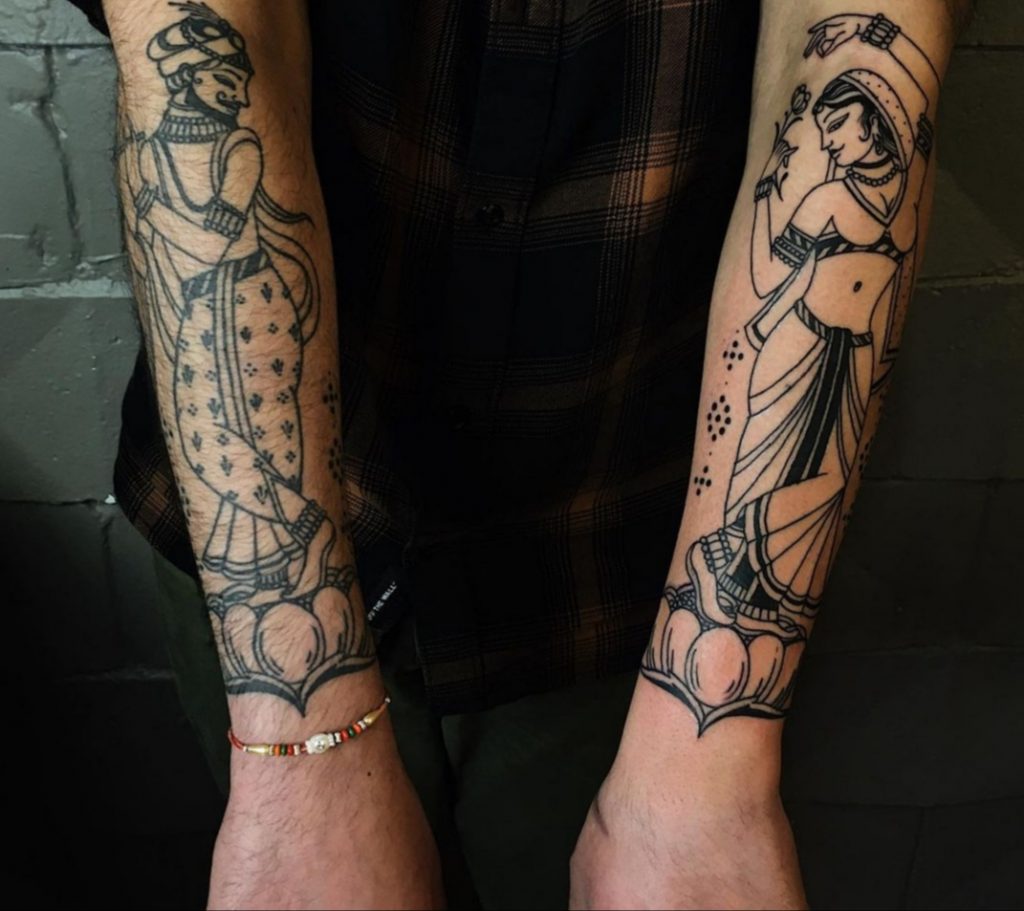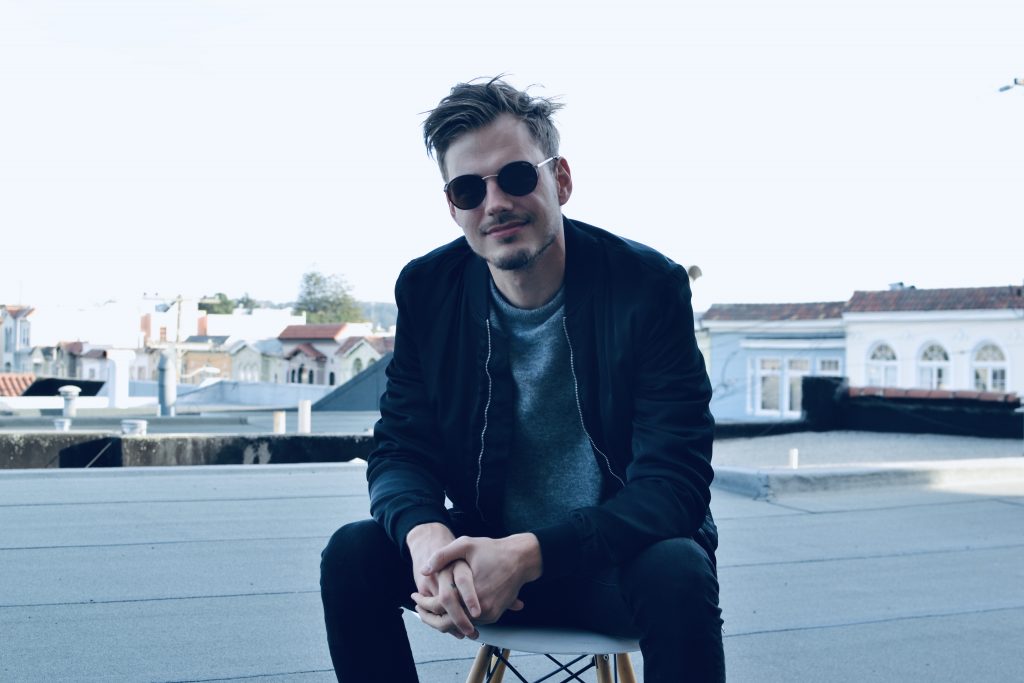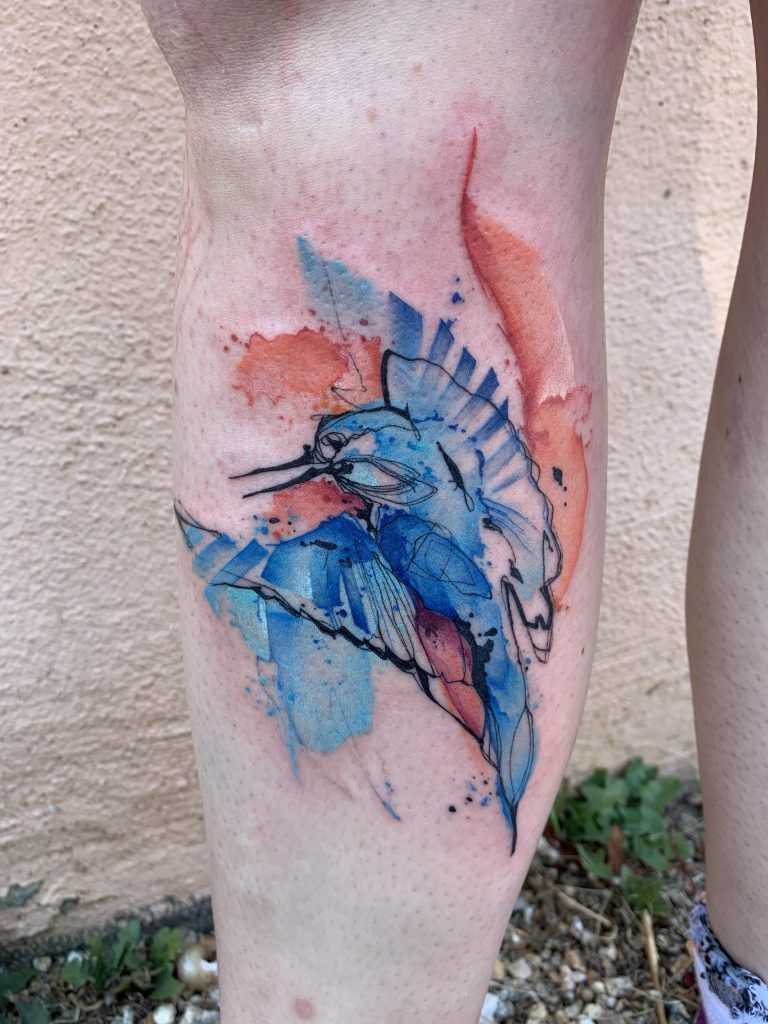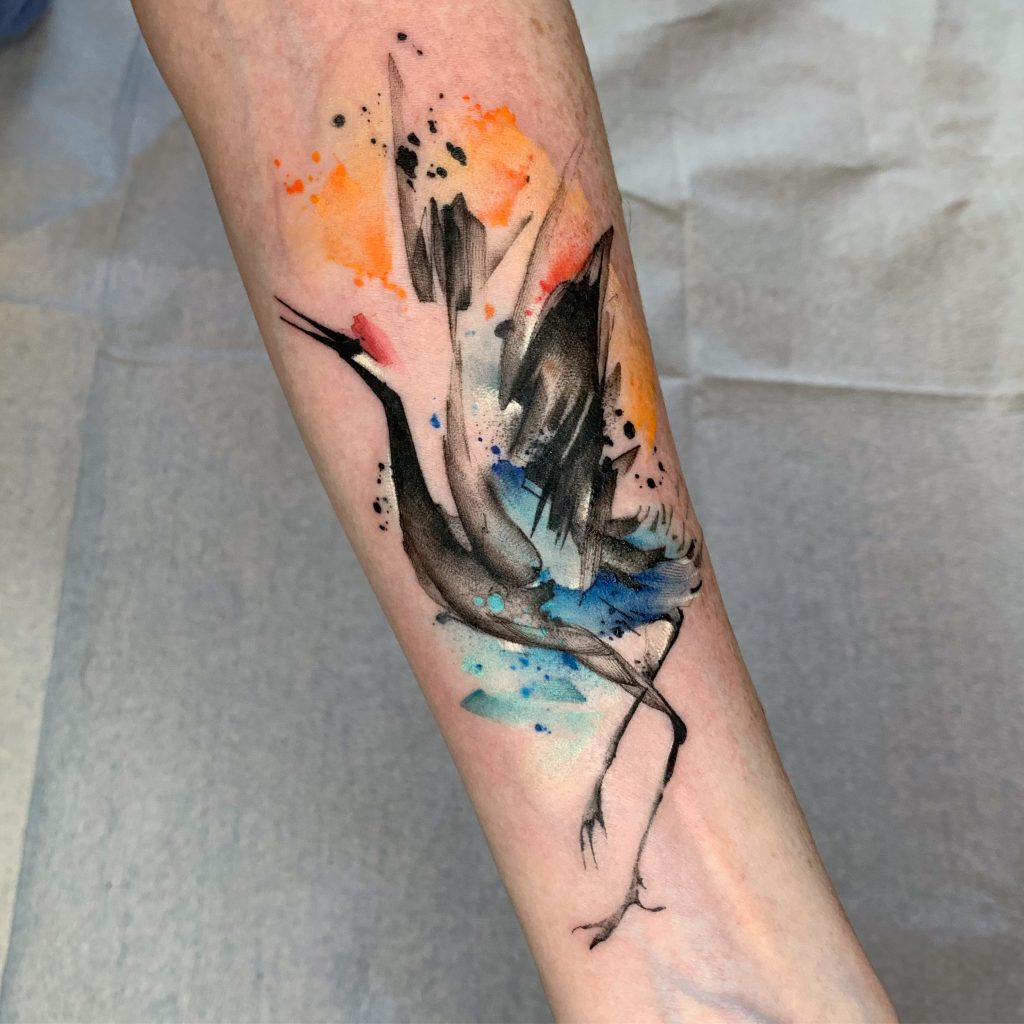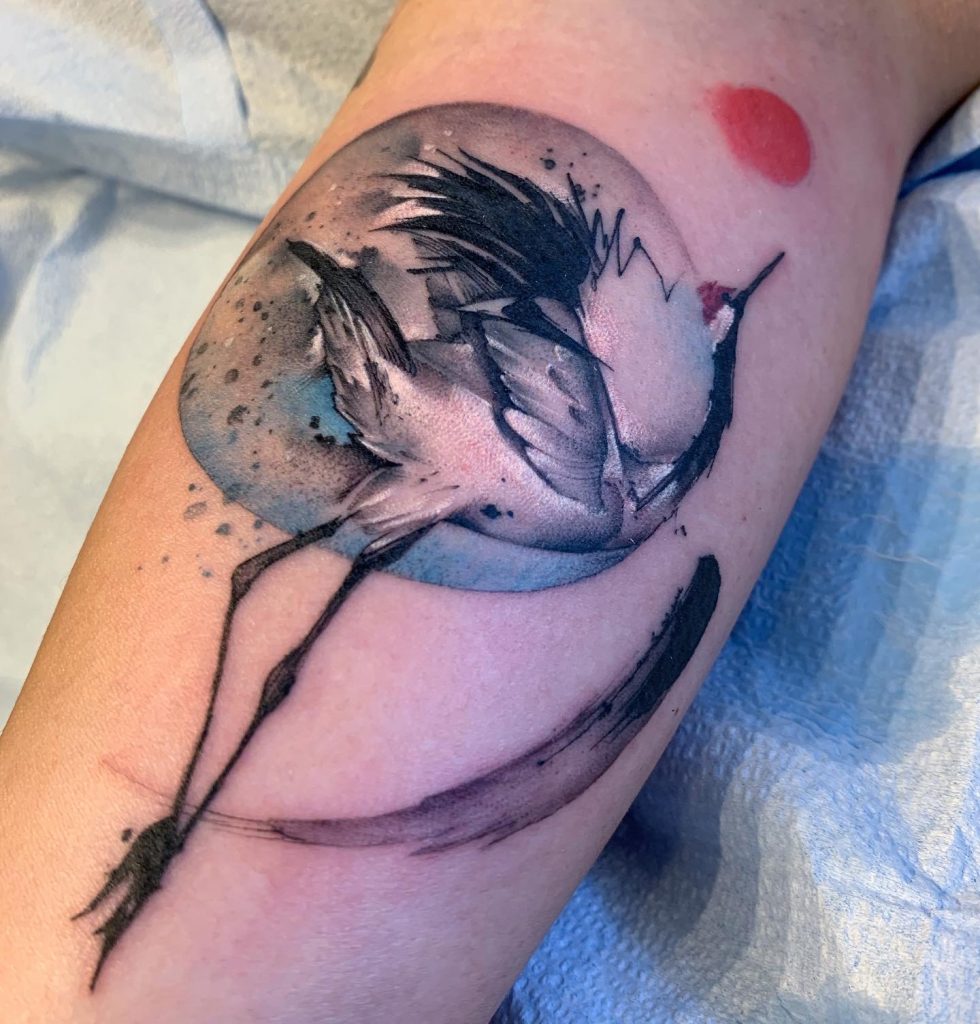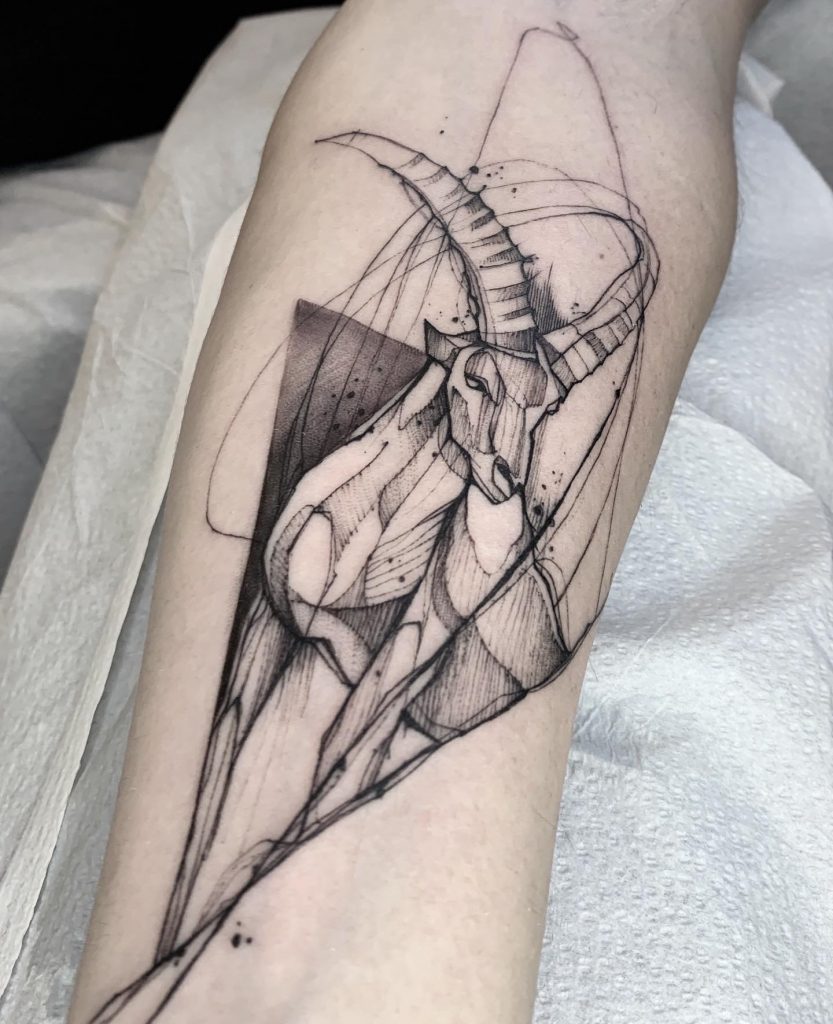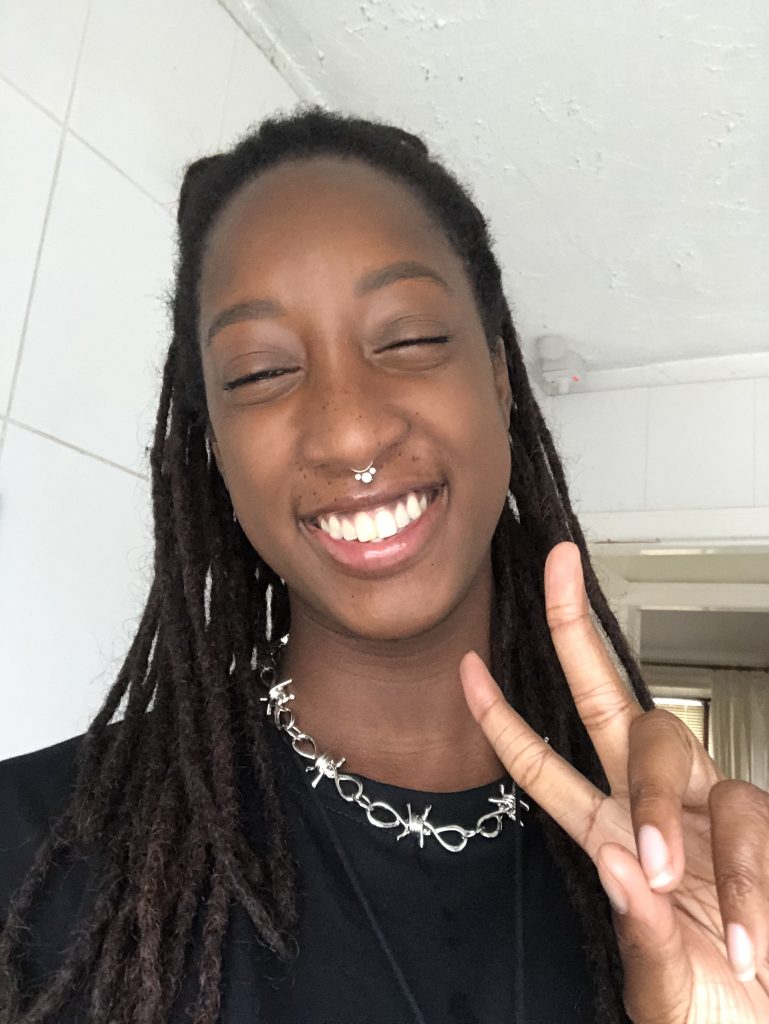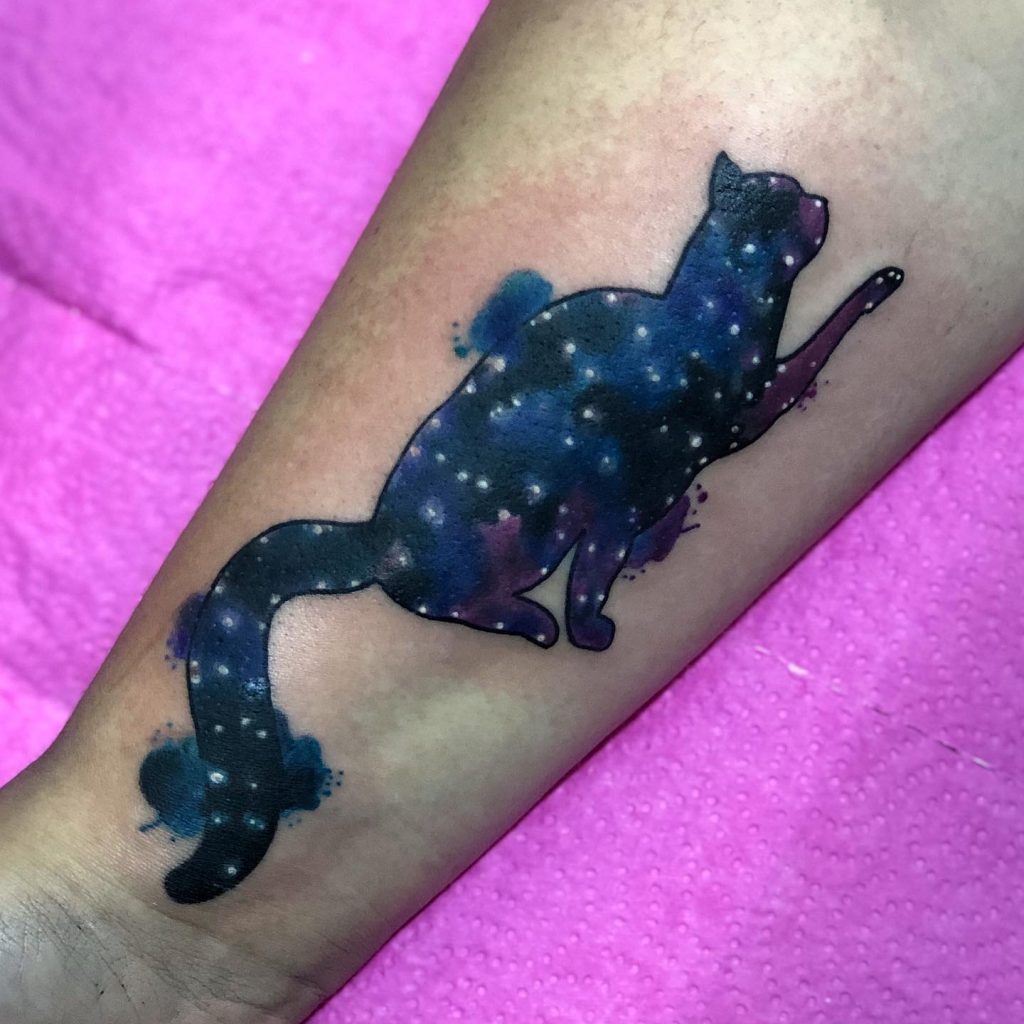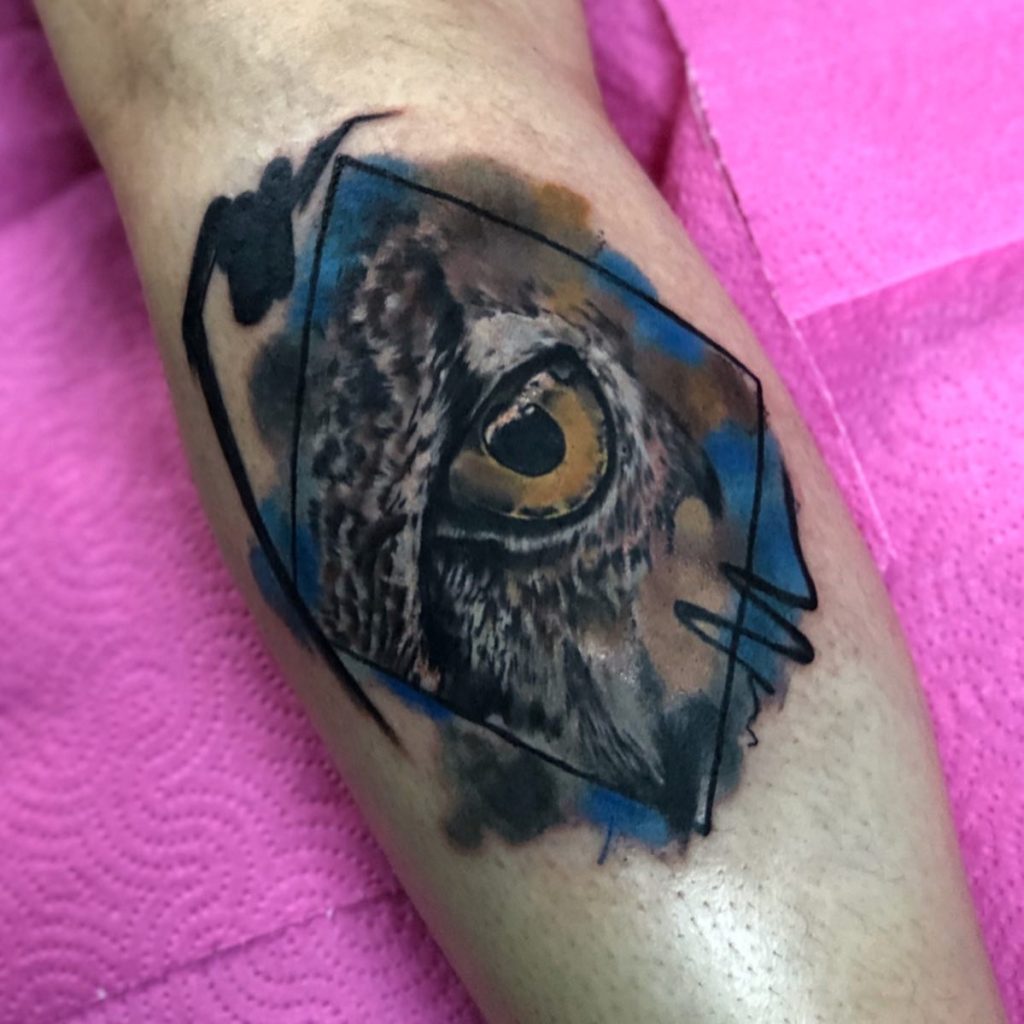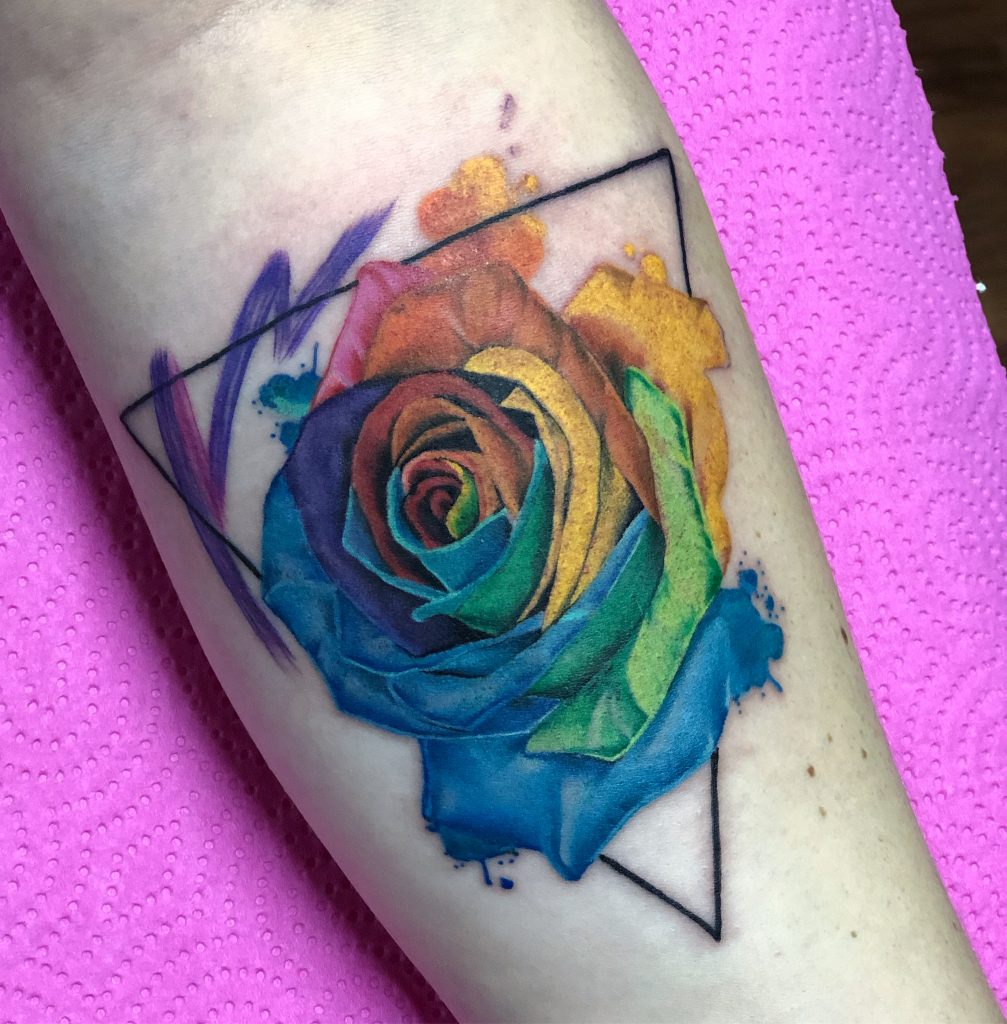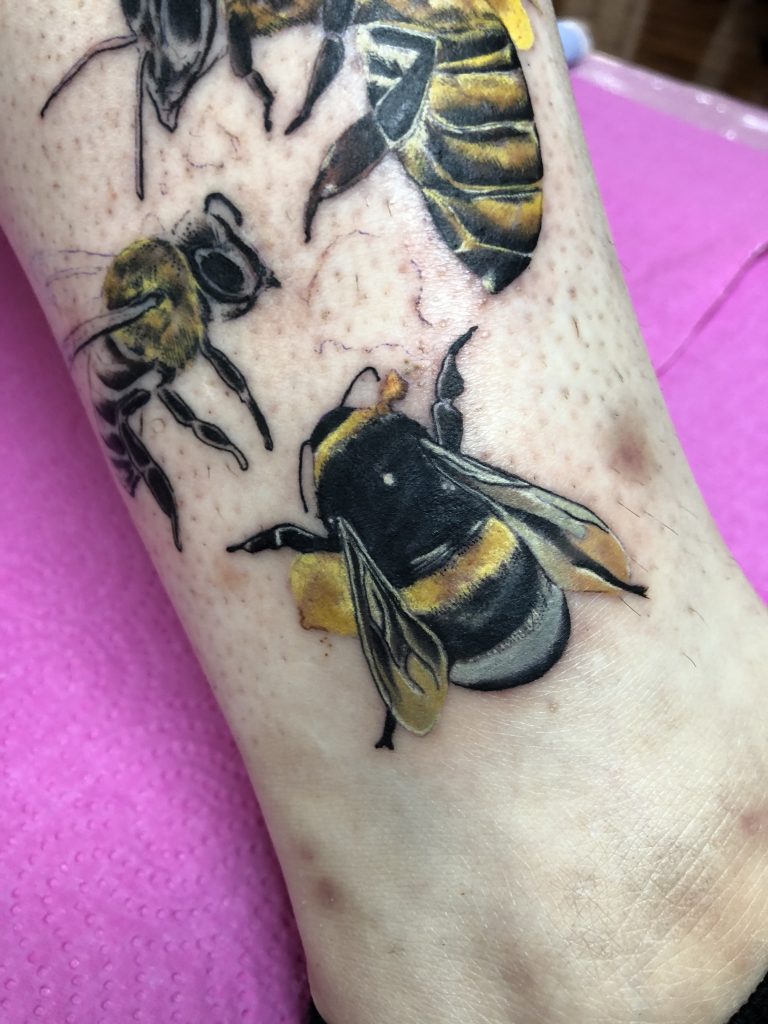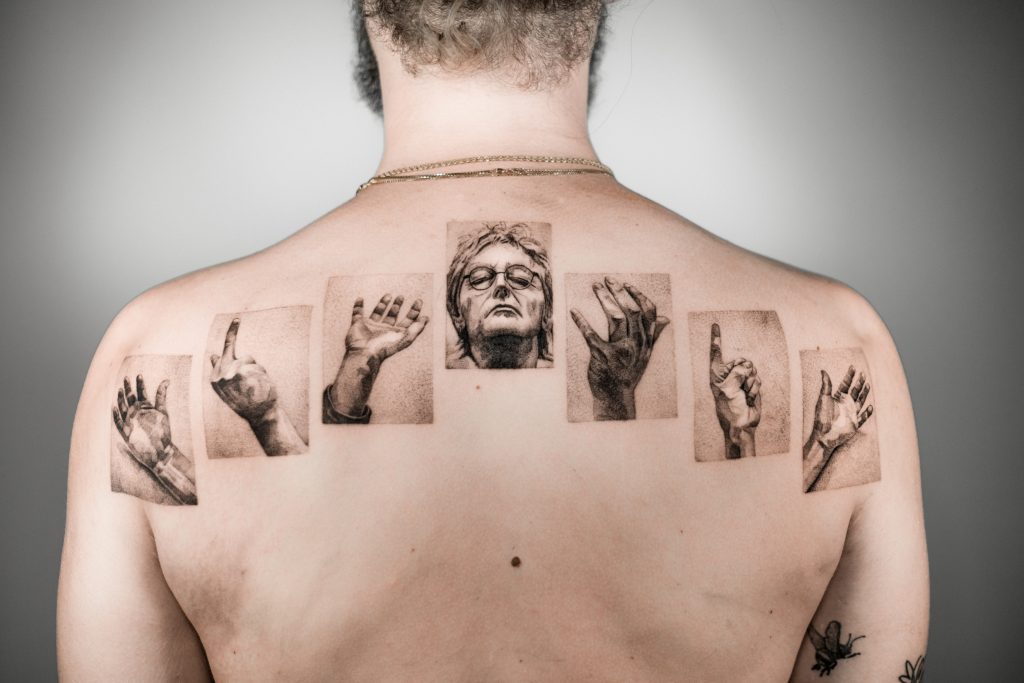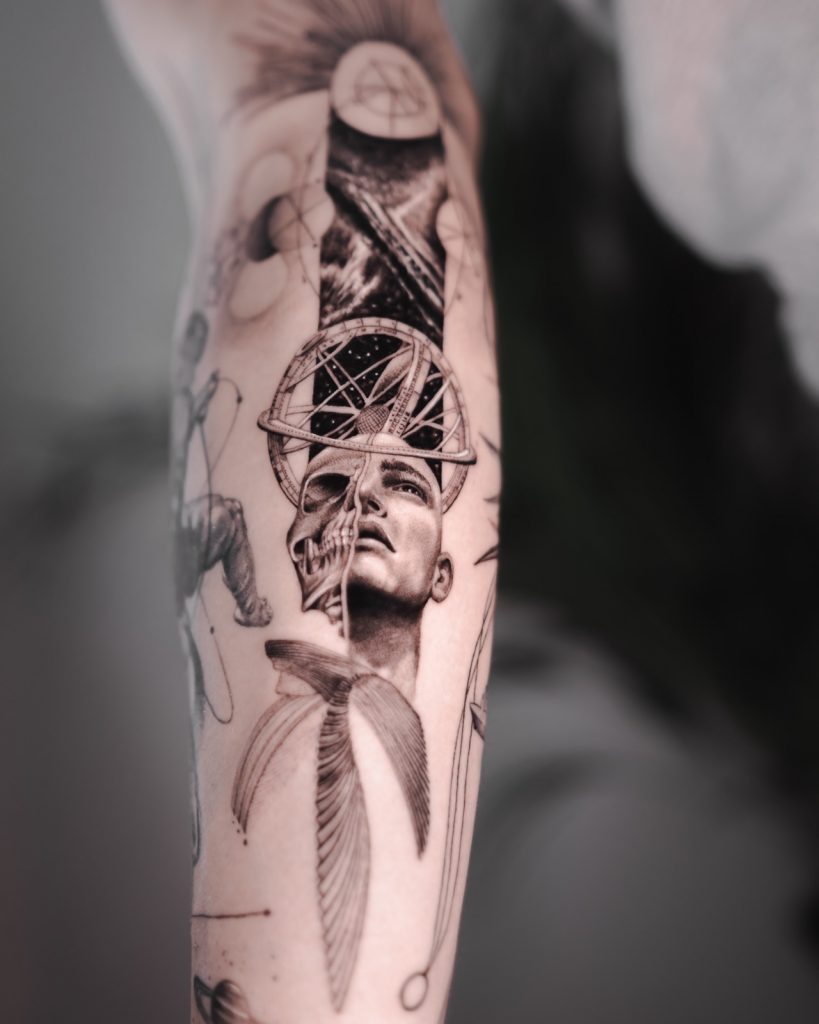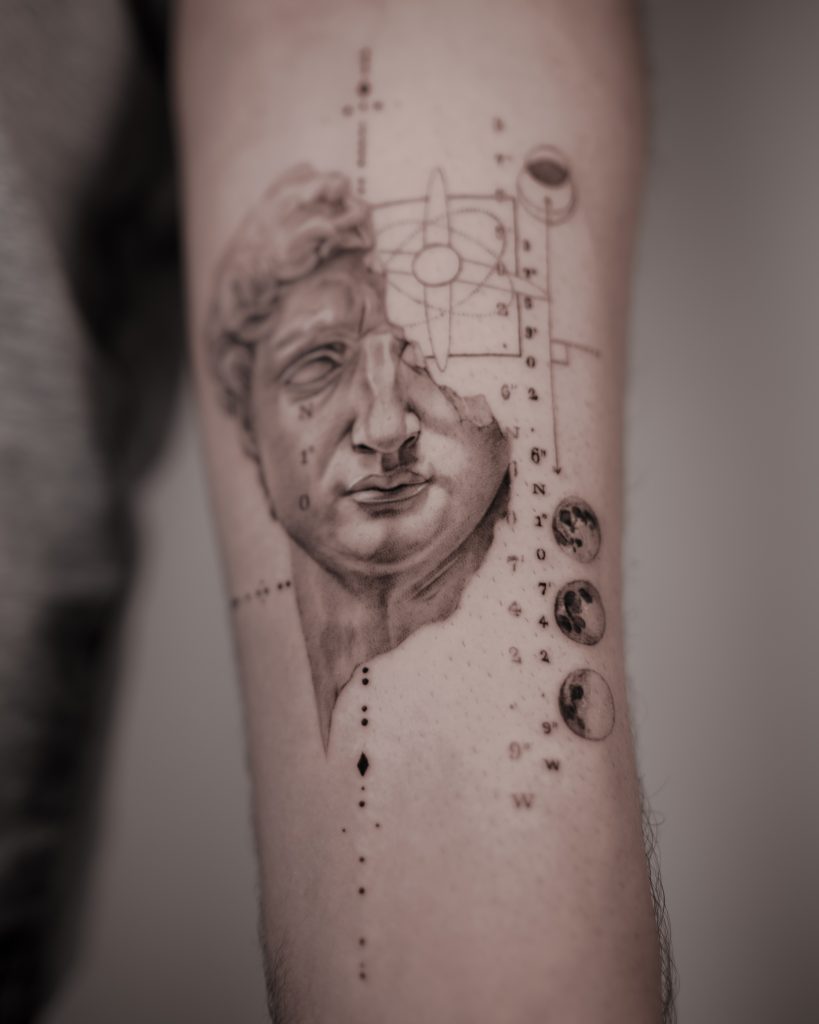Suro tattoos out of Gold Leaf Ink, San Francisco where she creates incredible (mostly) black and grey realism mixed with illustrative style tattoos. In this interview Suro tells us about her path into tattooing and what she’s learnt along the way…
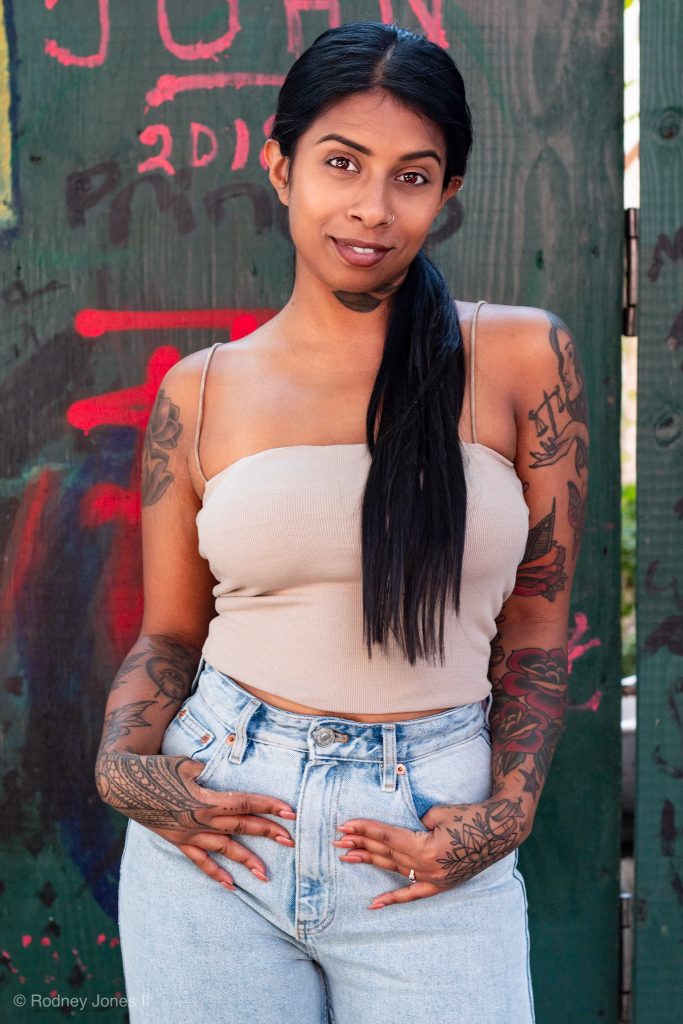
I was actually born in Dubai, United Arab Emirates. I spent my entire childhood there all the way up until 12th grade. I wanted to experience college in the states, especially art schools in New York, even though there are a ton of great art colleges in Dubai. I mostly wanted an escape. I come from a traditional Sri Lankan family and they wanted me to pursue a career as a doctor or lawyer. I knew that to be true to myself and find my creative rhythm I had to move.
The idea of tattooing was so far-fetched at that point because of my strict family and tattooing is taboo in the middle east, meaning haram (forbiddened) in the Islamic religion. I would get super intrigued by tattoos as I watched TV and saw tattoos on tourists that would come into town.
I kept saying that I would get a tattoo when I move to The States. Little did I know I would be pursuing a career in it.
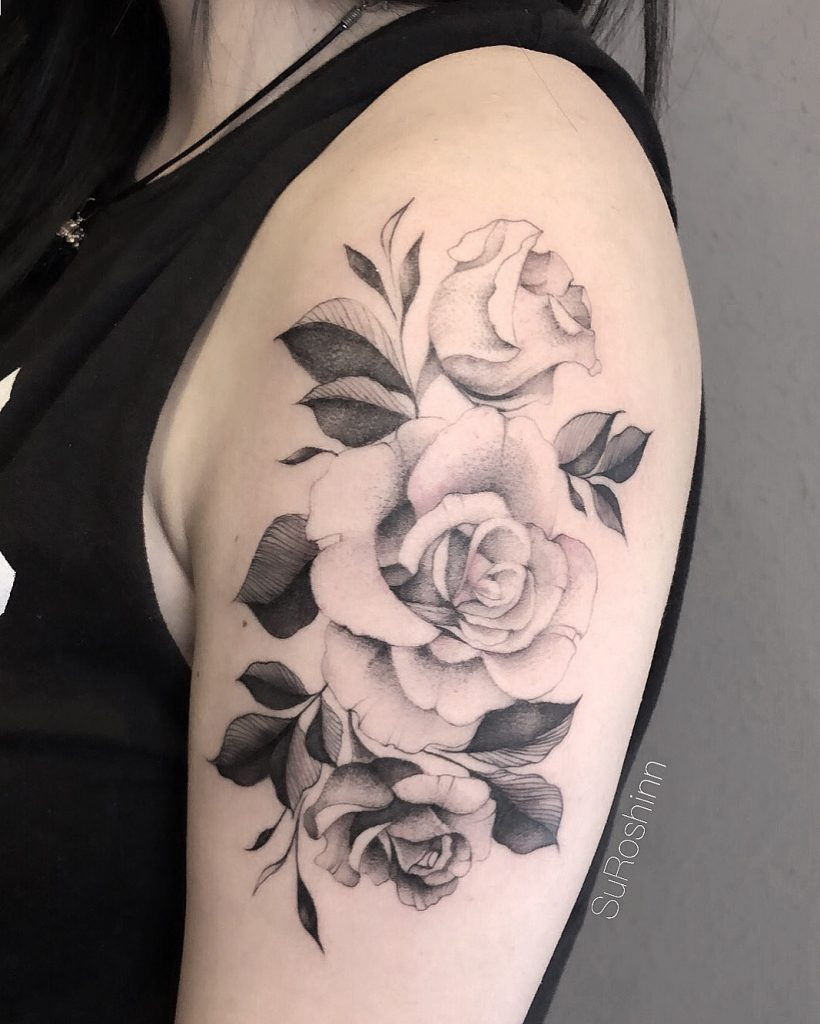
I’ve been creative since I was a baby, drawing on the walls and doors. I knew it was either art or nothing! I Loved to paint and I’ve painted with acrylics since I can remember. The only reason I even passed some subjects was because my diagrams were so realistic! So I knew I had to pursue a career in the arts.
I ended up at the Pratt Institute in Brooklyn, NY where I pursued Interior Design. I was super excited as I was going to an actual art school with other creatives, painters, sculptors, photographers, etc. It was during my time at Pratt that I found my way into the tattoo industry and I’ve never looked back.
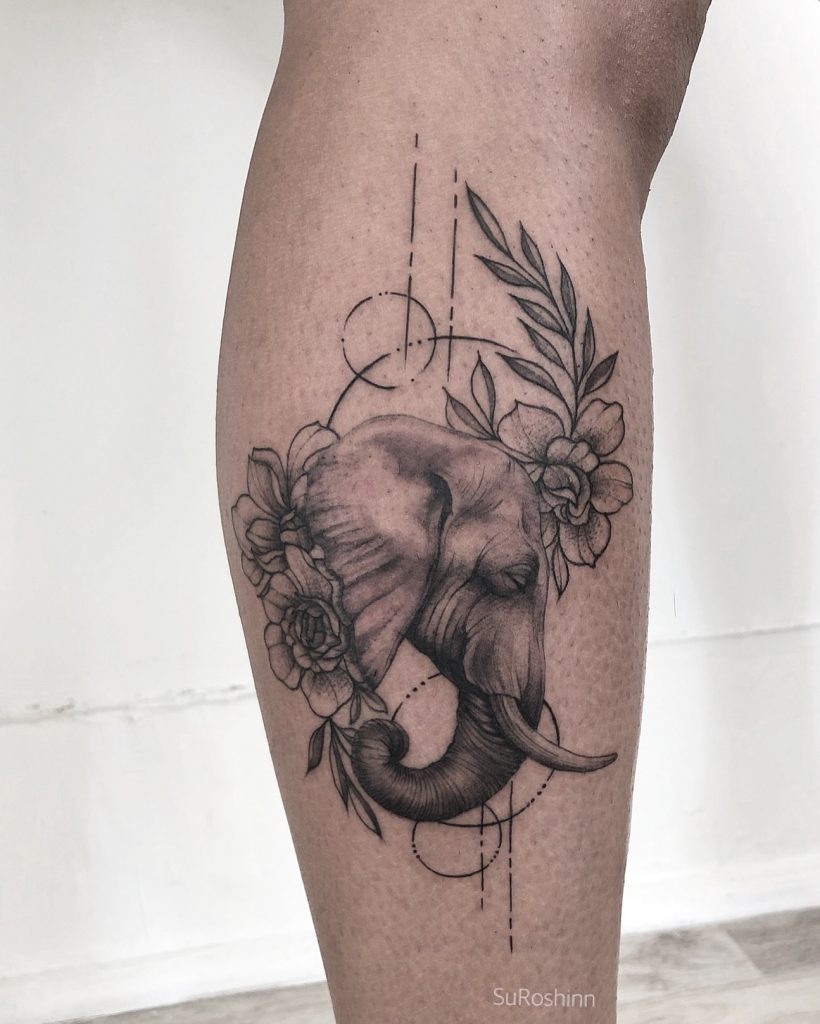
Starting out in a diverse city like NYC I was grateful to have come to work with some real cool people in the industry. I worked at about three shops mostly – the first Big Bang Ink in Brooklyn where I apprenticed at, and then Village Tattoo located in St.Marks which was my first shop as a tattooer and finally Red Baron Ink in the Lower East Side. Each studio had tattooers from different ethnicities and had different tattooing skills so it was cool getting to learn something new from them. I never once felt disrespected by any of them, so I know I was super lucky because tattooers, especially females have been treated unfairly.
I had quite a start, pretty rough cause I was super broke right after college. I was in between bartending and trying to keep my apprenticeship at Big Bang. Unfortunately I allowed nightlife to consume me which became my downfall and had to put a pause in my apprenticeship. I try to live with no regrets since I did bounce back a year later, but I do agree that was time wasted.
I have a better understanding of the industry especially to my clients. I’ve learnt to develop a language to communicate my art and tattoo what I like to tattoo.
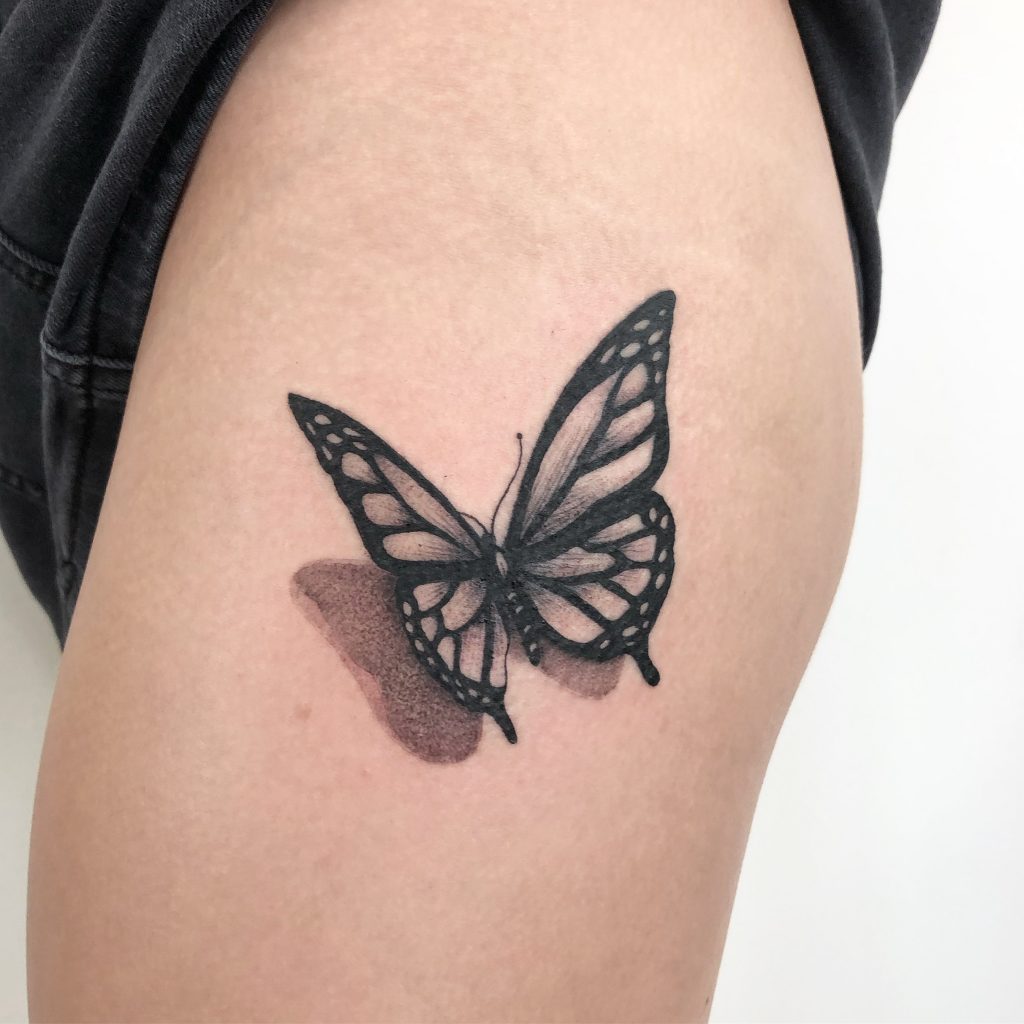
This industry is forever changing, and has been since I started about nine years ago. From the techniques and styles to even the public being more accepting of them. So this alone has opened up many doors for tattooers. From tattooing celebrities to people in blue collar, tattooers are now finding more and more creative ways to tattoo. Example, wireless tattooing is now a common thing which was a spoken myth back in the day.
When I started, most of the equipment I used was heavy and bulky whereas now I can literally fit my entire set up in a Fanny pack (CRAZY!) So having a wider range of clientele nowadays has evolutionised the art of tattooing. There are more styles too, like minimalism, dotwork, blackwork, micro realism etc. I can’t say the days of the Sailor Jerry flash are dead because hell that will be the day the industry dies, but it’s amazing to see how the newer generation of tattooers are changing the game.
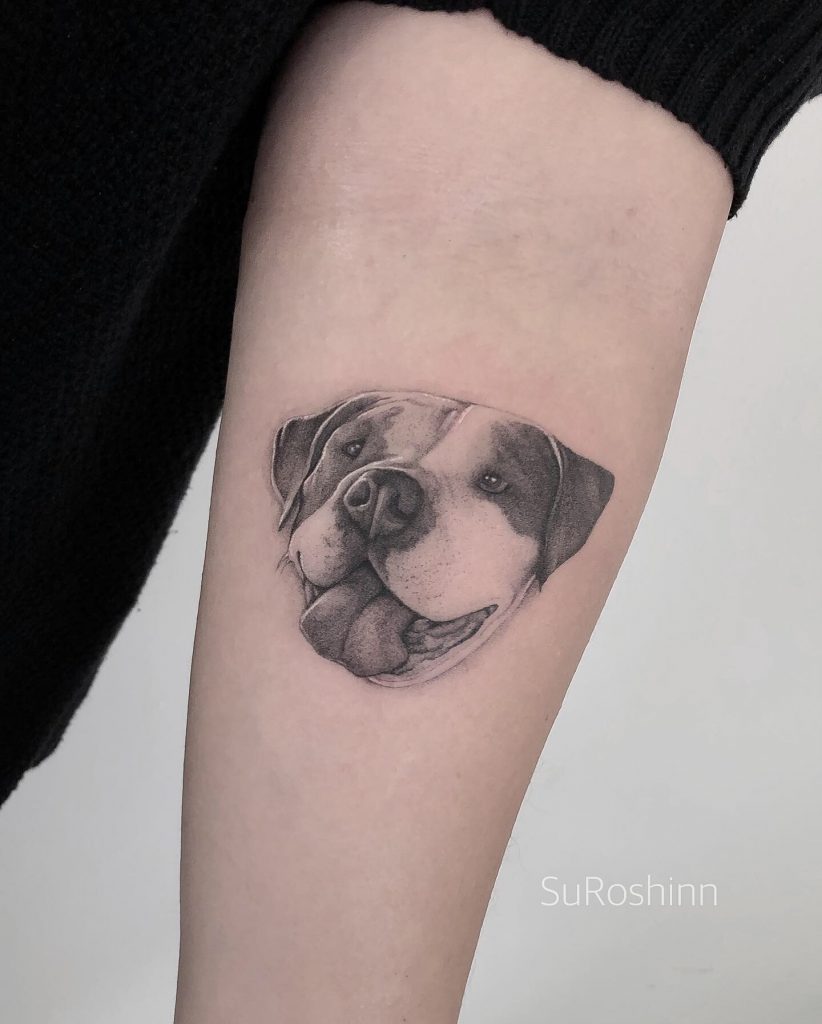
My style of tattooing is a mix between illustrative and realism. I love playing with light and shadows, so the contrast level will differ from piece to piece. I also love playing with lineweight, so having both bold and fine linework. My inspiration comes from art all over. Abstract to renaissance paintings I love to pull inspiration from fine art mostly.
Even though I paint with color I enjoy a monochromatic palette more. Using a pen, pencil or even charcoal is my favorite and has always been. I enjoy smooth shading and love when I can bring some realism with just one color. So my preference is mostly black and grey. I love to shade anything, from portraits to inanimate objects, to florals, etc. I really enjoy tattooing details so the more details the more fun the piece gets!
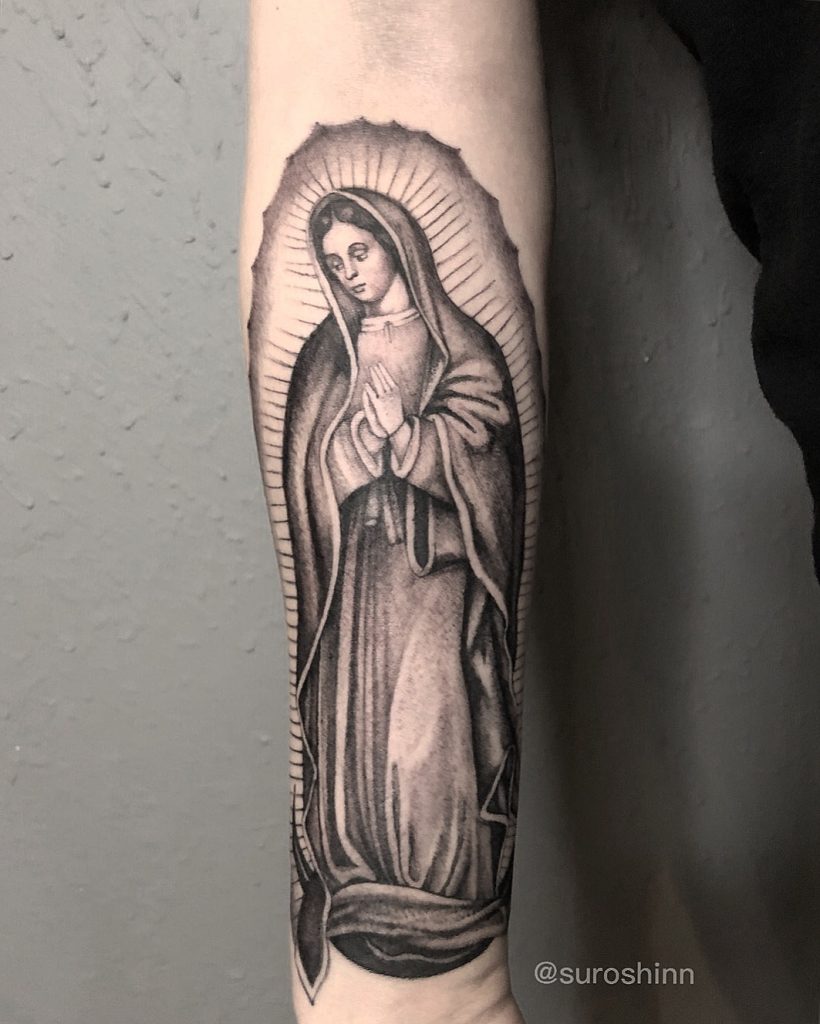
I see myself opening a private studio sometime in the future. I want to create a space that will pull in artists of different backgrounds and styles so that we can learn from each other. The same experience I had when I started nine years ago. The beautiful thing about this career is that there’s always room to grow and learn. So I can’t speak on it much now but I’m excited to see what the next nine years will bring.
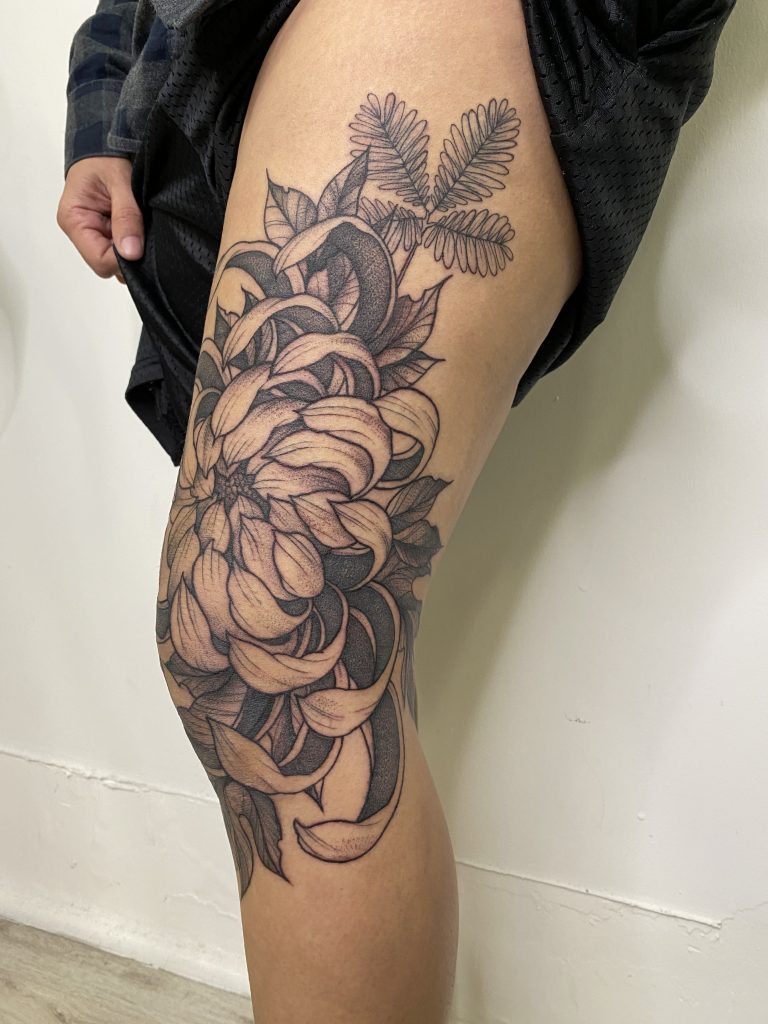
So for those looking to start, understand it is a commitment and an investment. Don’t start if your mind is not in the right space whether it be financially or even emotionally. Your relationship with whomever will be affected but know no matter what that it’s so worth it in the end.
An apprenticeship could take anywhere from a year to two, but what determines that is your drive. Find a solid mentor who also is in a good mental space cause you will take on from what you see, and trust me you don’t want one who parties! So have a good support system, surround yourself with those who make you better cause you’re going to need every bit as you start this journey.
Make sure to follow Suro on Instagram for more amazing tattoos.
